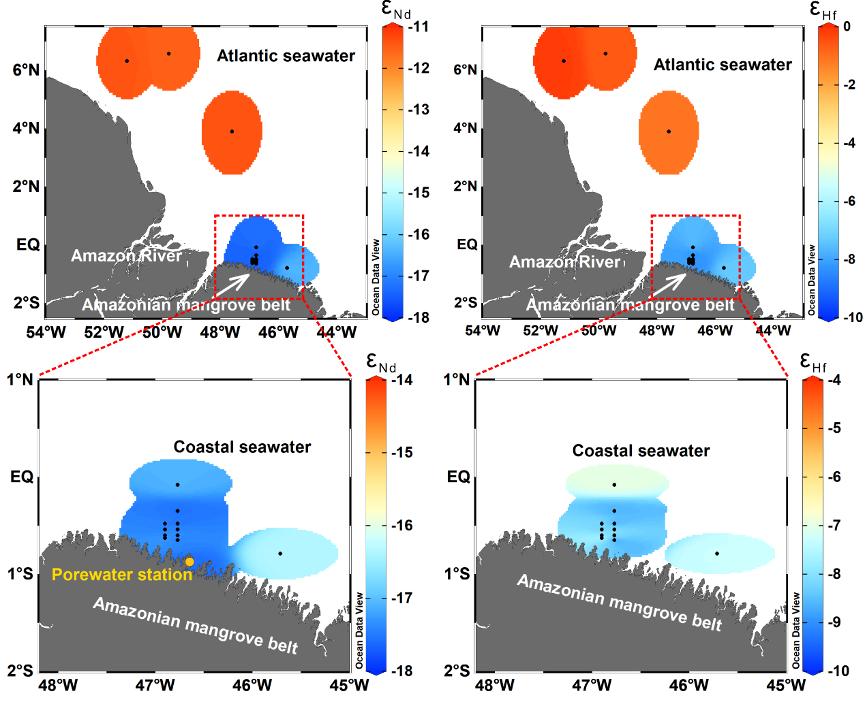The Amazonian mangrove systems accumulate and release dissolved neodymium and hafnium to the oceans
Mangroves are vital ecosystems nurturing a wide range of coastal and marine biodiversity while also contributing to climate change mitigation by sequestering atmospheric CO2. As a result, the large export fluxes of particulate and dissolved organic carbon and trace elements (TEs) from mangroves play a key role in controlling life in coastal seawater and retention of CO2. Therefore, gaining a comprehensive understanding of TE sources and processes governing their export from these mangroves to the ocean is of paramount importance. This is especially true for the Amazonian mangrove belt, which spans a total of 542 km and is one of the world’s longest continuous mangrove ecosystems.
Xu and colleagues (2025, reference below) investigated the concentrations of rare earth elements in various environmental compartments of the Amazonian mangrove systems, including coastal seawater, the estuarine water, intertidal creek water, porewater, and the iron-manganese oxyhydroxide fraction of coastal sediment. The coastal seawater samples were obtained in April–May 2018 during German RV Meteor cruise M147 (GEOTRACES process study GApr11). Consistent radiogenic neodymium and hafnium isotopic compositions of porewater, sedimentary iron-manganese oxyhydroxides and coastal seawater, suggest that the Amazonian mangrove belt supplies TEs through porewater discharge, dissolution of iron-manganese oxyhydroxides and their interactions with seawater. Together, these processes supply 8.4 × 106 g yr-1 dissolved Nd, equivalent to 64% of the total inputs of Nd to Amazonian coastal seawater. However, the impact of global warming and the increasing frequency of extreme climate events on TE fluxes from mangrove systems remains uncertain. Further research utilising samples collected from the Amazonian mangrove areas during an extreme dry season in November 2024, and additional samples from off the coast of the Amazonian mangrove belt collected during RV Meteor cruise M206 in December 2024 (GEOTRACES process study GApr21) will provide deeper insights.

Reference:
Xu, A., Hathorne, E., Seidel, M., Liu, T., Asp, N. E., Koschinsky, A., Dittmar T., Frank, M. (2025). The Amazonian mangrove systems accumulate and release dissolved neodymium and hafnium to the oceans. Communications Earth & Environment, 6(1), 13. Access the paper: https://doi.org/10.1038/s43247-024-01989-1.
